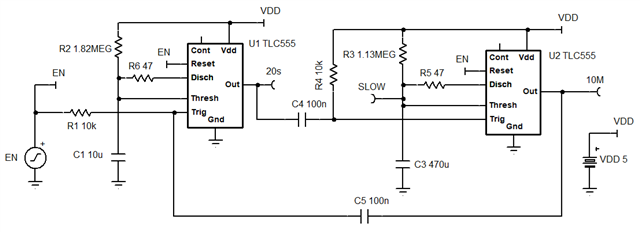Other Parts Discussed in Thread: NA555, , TPL5110, LM339, TLV4082, TPL5111
Tool/software:
Desired function waveform.pdfNA555, NE555, SA555, SE555 Precision Timers (Rev. I).pdf
Hello
I forgot to include some information in my last email. Please use this email.
I am designing a PCB for what our company hopes to be a large volume application. First, I want to test the circuit . I have a question regarding the TLC556 timer and would appreciate your help as soon as possible so that I can submit my design to the layout team. I have attached my questions in the pdf called " Desired Function Waveform" . I also attached the TI datasheet that I have been working from. I am thinking of using a variation of Figure 22 from the attached datasheet, but I am not sure how the timer will start up. See attached PDF of what I need to build.



